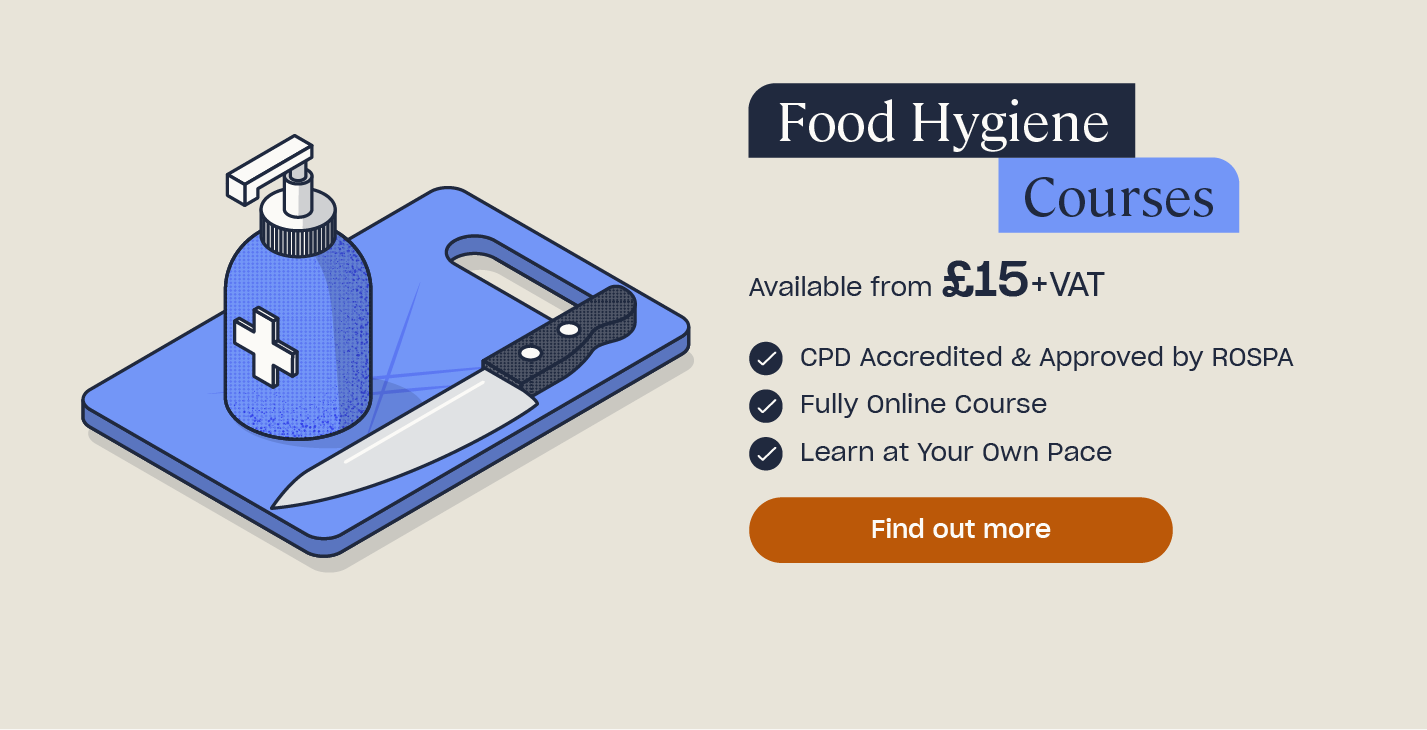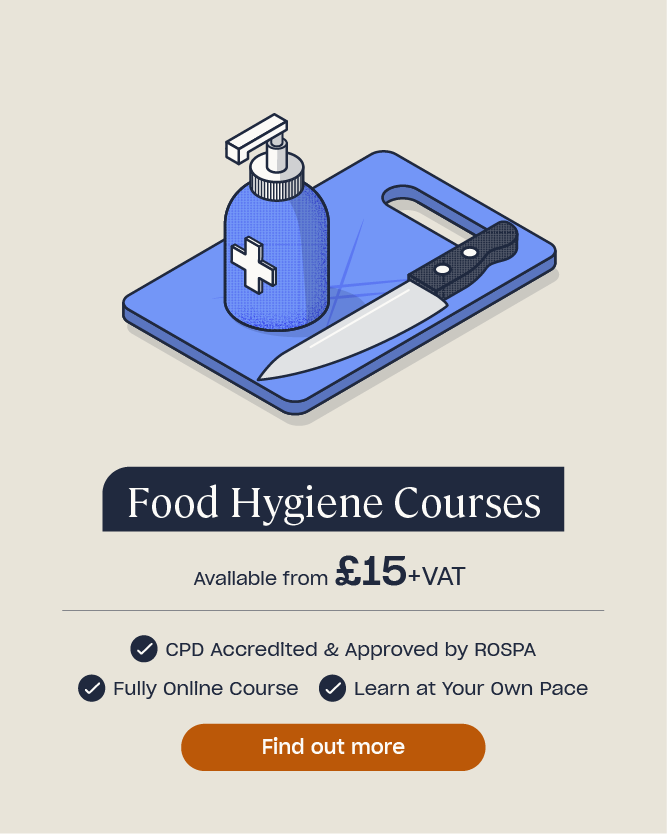Microwave Safety Guide
Microwaves have long been a kitchen staple thanks to their compactness and time saving abilities. They are incredibly versatile kitchen appliances and there’s not much that you can’t cook in a microwave. From heating up last night’s leftovers, to cooking a whole chicken, microwaves are convenient, often more energy efficient and can suit any budget. Nevertheless, as with any kitchen appliance, improper use can pose safety risks. In this article we will explore how to use a microwave safely and touch on the foods that can be cooked in a microwave.
What is a Microwave Used For?
A microwave is an electric oven that heats and cooks food using electromagnetic radiation. As such, microwaves can be used in similar ways to conventional ovens with the added benefit that they often have specific settings to cook certain foods or to defrost frozen foods. Microwaves can also be used in a similar way to stovetops, for example to melt chocolate or butter or to boil liquids.
Common microwave uses include:
- Cooking meals
- Reheating leftovers
- Defrosting frozen food
- Steaming vegetables
- Roasting chicken and vegetables
- Baking cakes and cookies
- Cooking food from frozen
Are Microwaves Safe?
Microwaves use a type of radiation to cook or heat food. Radiation can be a daunting word to hear, especially in relation to food, and this has caused concerns in the past about their safety. However when used properly microwaves are completely safe to use.
Microwave ovens cook food by passing microwave radiation through it. They have a magnetron that channels electrical energy from a power source to a heated filament which creates a flow of electrons that transmit microwaves. These microwaves then bounce around the oven and become lodged in the water, sugar and fat molecules in food. Once absorbed, the microwaves cause the molecules to vibrate which creates heat and cooks the food via radiation heating. Convection microwave ovens work in a similar way, however, they have an extra heating element and fan that circulates hot air around the oven, making them somewhat more versatile than a traditional microwave oven.
A common misconception regarding the use of microwaves is that the radiation that they use is unsafe. Radiation can be harmful to humans and microwave ovens can leak waves, however the risk of injury from microwave radiation is extremely low. Moreover, moving away from a microwave whilst it’s on can dramatically reduce the risk of exposure.
Microwaves have a variety of built in safety features to ensure they are safe to use. It’s important that you purchase your microwave from a reputable supplier and check for the relevant safety marking such as CE marking, to ensure that it complies with the necessary safety standards.
Safety features that most microwaves have include:
- Efficient door seals to confine the microwaves to the oven.
- Interlock switches that automatically cut off microwaves when the door button is pressed or the door is opened.
Microwave Fire Safety
As mentioned, most microwaves have built in safety features to prevent them from causing undue harm. However, that is not to say that they don’t pose a risk at all. According to the London Fire Brigade, around 60% of house fires start in the kitchen. As such, it’s vital to ensure that all kitchen appliances are used safely to reduce the risk of them causing a fire. Some of the most common causes of microwave fires include putting metal inside the microwave, using flammable plastic containers or over cooking food.
Tips that you can follow to reduce the risk of your microwave catching fire include:
- Don’t put metallic objects such as cutlery or tin cans inside the microwave.
- Don’t put sponges or dishcloths inside the microwave as they can catch fire.
- Keep all vents clear and avoid storing objects on top of the appliance.
- Always follow the manufacturer’s instructions regarding what can and can’t be microwaved.
- Clean your microwave regularly to avoid the build up of flammable grease and dirt.
- Don’t use an extension cord to power your microwave.
- Don’t leave the microwave unattended whilst in use.
If your microwave catches fire then immediately turn it off and unplug it, only if it is safe to do so. Do not attempt to open the microwave door as this will provide the fire with more oxygen. Instead, keep the microwave door closed as this will help to suffocate the fire and call 999. Once the fire has been extinguished you may be tempted to use your microwave as normal if the damage doesn’t seem too extensive. However, at a minimum you should get your microwave checked and tested by a qualified person after a fire as there could be damage that you can’t see that could pose a risk if use is continued.
Microwave Safe Symbol
Another common cause of microwave fires is using incompatible materials such as plastic containers. Most plastic containers can’t be microwaved and will melt once put into the microwave. This can result in fire and the release of harmful chemicals which can leech into food. To prevent this you must ensure that anything you put in the microwave has a microwave safe symbol.
Microwave safe symbols can vary but are often represented by three wavy lines inside a box or image of a microwave. The symbol indicates that a container has been specially designed and tested to handle the heat and energy of a microwave and it acts as a guarantee that the container won’t melt. It’s important to note that in the UK, microwave safe labels also indicate that the container will not release harmful chemicals when heated. This is not necessarily true of containers marked microwave safe in other countries.
You can find examples of microwave safe symbols below:

What can you Cook in a Microwave?
Microwaves are undeniably versatile appliances and as mentioned above there isn’t much that you can’t cook in a microwave. As a general rule of thumb, you should be careful when microwaving food with a high water content as the internal pressure can build and cause it to explode. It’s also worth noting that microwaving certain foods can impact their texture and though they will still be safe to eat, they may not taste very nice!

Below you will find information on what you can cook in a microwave. However, you must always check the manufacturer’s instructions before cooking anything in your microwave to see if there are specific foods that your model can’t cook.
Can you Cook Eggs in the Microwave?
Yes, you can cook eggs in the microwave but it’s advisable to only cook scrambled or poached eggs as boiled eggs can explode. Whilst some websites claim that you can cook boiled eggs in a microwave, as they are cooked with the shell on there is the risk of pressure building which can cause the eggs to explode and cause burns. For this same reason it’s advisable, when poaching an egg, to pierce the yolk and white of the egg with a toothpick to stop it from exploding.
Can you Cook Pasta in the Microwave?
Yes, you can cook pasta in the microwave. Place the dry pasta in a microwave safe container and cover with water. Be careful not to add too much water to reduce the risk of it boiling over whilst cooking. You can cover the pasta with either cold or hot water, however if you choose to use hot water you will need to reduce the cooking time. The cooking time will vary depending on the type of pasta that you are cooking and the wattage of your microwave.
Can you Cook Bacon in the Microwave?
Yes, you can cook bacon in the microwave. To cook bacon, place the rashers on a microwaveable plate ensuring that they are not over-lapping and microwave in 30-second increments until cooked. Though it is possible, it can be tricky to get bacon as crispy in the microwave as you would when pan frying or roasting it. However, placing a sheet of microwaveable kitchen roll on top of the bacon can help to make it crispier.
Can you Cook Rice in the Microwave?
Yes, you can cook rice in the microwave. Rinse the rice thoroughly and place in a microwaveable bowl. Cover the rice with water (a common rice to water ratio is 2 parts water to 1 part rice but be sure to check the instructions indicated on the packet) and cook at full power for approximately 10 minutes, uncovered. After 10 minutes check the rice, fluffing with a fork if necessary to avoid burning and place back in the microwave for another 10 – 15 minutes. Once cooked, leave the rice to stand for about 5 minutes. It’s essential that you ensure the rice is cooked thoroughly before eating as uncooked rice can harbour Bacillus cereus which can cause serious food poisoning.
Can you Cook Sweet Potatoes in the Microwave?
Yes, you can cook sweet potatoes in the microwave. How long you need to cook the potato will depend on its weight. Some microwaves will have special settings for cooking potatoes with preset times depending on the weight which can remove the guess work from timing. If not, it’s a good idea to microwave the potato in increments so that you can closely monitor it. It’s important that you pierce the sweet potato several times or slice down the middle of it so that the steam can escape, otherwise the potato may explode.
Can you Cook Chicken in the Microwave?
Yes, you can cook chicken in the microwave. The cooking time will depend on the cut of meat that you wish to cook. However, it’s advisable that you cut chicken breast into smaller pieces to ensure that it cooks thoroughly. You can also cook a roast chicken in the microwave, the cooking time of which will vary depending on the size of the bird; the larger the chicken the longer the cooking time. Whilst it’s possible to cook chicken in a microwave, many chefs advise against it as it can render the chicken rubbery and chewy.
Can you Bake a Potato in the Microwave?
Yes, you can bake a potato in the microwave. You can cook a potato in the microwave in the exact same way as a sweet potato. However, it’s worth noting that microwaving a potato will not create the crispy skin so often attributed with a jacket potato. One way to counteract this is to microwave the potato for a slightly shorter amount of time and then to finish it off in the oven or an air fryer to get a crispier skin. Again, it’s imperative that you pierce the potato several times to ensure that the steam can escape and the pressure doesn’t cause the potato to explode.
Can you Cook Corn on the Cob in the Microwave?
Yes, you can cook corn on the cob in the microwave. Place the corn on the cob on a microwaveable plate and add a splash of water. Similarly you can wrap the cob in a damp kitchen roll. It’s advisable to pierce either end of the cob to allow steam to escape. Microwave for approximately 4 minutes depending on the size of the corn and the wattage of your microwave. Allow to stand for a few minutes before serving.
Can you Cook Broccoli in the Microwave?
Yes, you can cook broccoli in the microwave. Rinse the broccoli and cut it into florets. Place the florets in a microwaveable bowl with a few tablespoons of water. Cover the bowl with a microwave safe plate or lid and microwave for a few minutes. Let the broccoli sit, still covered, for a few minutes after taking it out of the microwave so that it can continue to steam. You can test whether the broccoli is cooked by pricking it with a fork or knife. Depending on how firm you like your broccoli, you can then either cook it for a few more minutes or serve it immediately.
Can you Bake Cookies in the Microwave?
Yes, you can bake cookies in the microwave. However, the microwave is arguably better suited to individual servings or small batches of cookies rather than making large quantities. Make your cookie dough as normal and then portion out a single serving onto some greaseproof paper, ensuring that the paper can be microwaved first. Slightly flatten the dough to ensure it cooks evenly and microwave for about 40 seconds. If the cookie is still a bit too doughy for your liking, continue microwaving in 5 second increments till you reach the desired texture.
Can you Cook Sausages in the Microwave?
Yes, you can cook sausages in the microwave. However, it’s not recommended as the sausages are unlikely to brown and the skin can split during cooking. To cook sausages in the microwave, prick the skin of the sausages several times and place them in a suitable microwaveable dish. Be sure not to cook too many sausages at once to ensure they cook properly. Cover the dish with a microwavable lid and microwave on full power for about 6 – 8 minutes, although this will vary depending on how many sausages you wish to cook and the wattage of your microwave. Ensure that the sausages are piping hot before serving.
Can you Cook a Steak in the Microwave?
Yes, you can cook a steak in the microwave, however it’s not the best method for cooking a steak and will result in a considerably different finished product than pan-frying. To cook a steak in the microwave, pat it dry with kitchen roll and season accordingly on both sides. Unlike pan-frying, it’s advisable to not use any oil as this can burn much more easily in the microwave. Microwave the steak on medium heat in 30 – 45 second increments, ensuring that you turn the steak so that both sides can cook evenly. How long you cook the steak in total will depend on your desired doneness and the thickness of the steak. Again, though it’s possible to cook a steak in the microwave, it’s not recommended as it can result in a dry, chewy texture. Moreover, whilst steak can be eaten rare, it’s more prone to uneven cooking and cold spots in a microwave which can cause food poisoning.
Can you Cook Fish in the Microwave?
Yes, you can cook fish in the microwave. Some fish must be defrosted before it can be cooked in the microwave whilst other types of fish can be cooked from frozen, so it’s important to check the instructions before proceeding. The cooking time will depend on the type and size of fish that you have, for example fillets will cook much quicker than whole pieces of fish. It’s advisable to cover fish when cooking it in the microwave as this helps to steam it and protect you from any spitting that may occur.
Can you Bake a Cake in the Microwave?
Yes, you can bake a cake in the microwave. Make your cake batter as normal and place in a microwave safe cake tin. Ensure that you use a recipe specifically designed for a microwave as certain adjustments will need to be made, for example microwave cakes tend to need more liquid. As a microwave tends to cook food much quicker than a conventional oven, you will need to adjust the cooking time accordingly and this will be dependent on the wattage of your microwave and the size of your cake. It’s advisable to cover the cake to prevent spattering and ensure that the cake cooks evenly. Once you’ve finished cooking, check whether the cake is cooked by inserting a knife or toothpick into the centre. If it comes out clean then the cake is cooked. Allow the cake to stand for a few minutes before removing it from the cake tin and leaving it to cool on a cooling rack. Whilst you can bake an entire cake in the microwave, it lends itself better to single servings or mug cakes as these smaller batches are easier to cook evenly.
Where to Put a Microwave in a Kitchen
A big part of the appeal of microwaves is their compactness. Despite being one of the most frequently used kitchen appliances, they are available in a range of sizes which means they can be put almost anywhere in the kitchen. Nevertheless, despite this versatility there are important safety risks to consider when deciding where to put a microwave and these risks must trump any aesthetic positioning that you might be considering.
It’s vital that your microwave is placed on a flat, heat resistant surface in a well ventilated area. This will help to keep it cool during use and ensure that it doesn’t cause damage to surfaces. It’s also advisable to position them out of the reach of small children.

When positioning a microwave you should avoid putting it:
- Near a window – It might seem like a good idea to place a microwave in front of a window in order to help with ventilation, however this can prove to be incredibly dangerous. Not only can the heat from a microwave cause serious damage to your windows, such as causing them to crack or shatter or damaging the rubber sealing, it can also cause problems during an emergency. It’s advisable to keep windows clear so that you have a clear escape route in the event of a fire. If you position a microwave in front of a window you are blocking a potential escape route and risk trapping yourself, especially if the microwave itself catches fire.
- Above eye level – Having a microwave above eye level may seem like the more practical choice as it can make putting things in more convenient, however it does pose safety risks. If you have to reach up to access your microwave there is a risk that you could trip whilst removing something hot. For example, if you were reheating soup and stumbled whilst removing it from above you, then you are likely to spill the soup all over you and risk severe burns. Moreover, placing a microwave above eye level increases the risk for young and older people alike who may not have the same height, dexterity or flexibility as you to easily reach it and use it safely. Finally, a microwave that is kept above eye level can be harder to clean properly which can increase the risk of grease building up and posing a fire risk.
- Against a wall – Microwaves need a lot of space, not just for the door to open but also so that the ventilation system can do its job and prevent it from over heating. If you position a microwave against a wall then you risk blocking the vents. This can cause a build up of heat and steam which can not only damage the wall, but increase the risk of fire. For this reason it’s also advisable to not put your microwave in a cupboard as this can block air circulation. If you want to keep your microwave out of sight, then it’s better to get a built in microwave with adequate accommodation made for the vents, rather than shoving it in a corner or a cupboard.
- Next to a water source – A microwave is an electrical device and should therefore be kept away from wet or damp areas. Keep your microwave away from the sink or a dishwasher to reduce the risk of splashes which can cause electrical damage to the appliance and increase the chances of a fire. It’s recommended to keep a microwave at least 4 feet away from a sink.
- Close to other appliances – Modern kitchens tend to have many different appliances such as air fryers and slow cookers. These kinds of appliances generate a lot of heat and need to have enough space to keep the vents clear and ensure adequate air circulation. Placing appliances too close to one another can block vents resulting in them overheating which can cause damage to the appliance which in turn increases the risk of fire. It’s also advisable to keep microwaves away from larger appliances such as the fridge. This is because placing a heated appliance next to a cooling appliance can negatively impact the efficacy of both appliances and make them more expensive to run.
Microwave Safety Tips
Microwaves are generally safe appliances to use and have various safety features, as mentioned above, to keep them safe. However, here are some safety tips that you can follow to ensure that you use your microwave safely:
- Only use microwave safe containers in the microwave. This will prevent your containers from melting and potentially leeching harmful chemicals and microplastics into food.
- Always keep the vents clear and avoid storing things on top of the microwave, especially when in use.
- Ensure that your microwave is plugged directly into a wall socket and not an extension lead.
- Clean your microwave regularly to ensure it remains a hygiene environment for food and to prevent dirt and grease building up which can cause a fire. Regular cleaning can also help to prevent cross contact and reduce the risk of an allergic reaction.
- Always read the manufacturer’s instructions so that you understand what can and can’t be cooked in your microwave or if there are special steps you should take when cleaning it.
- Check that food is piping hot before eating. Food must be kept out of the temperature danger zone to ensure that any bacteria has been killed otherwise it can cause food poisoning. As microwaves can only travel so far into an object before losing momentum, the outside of thicker food is heated by microwaves whilst the inside is heated through the conductive transfer of heat. Therefore, if cooking or reheating thick cuts of meat or large dishes, cut it into smaller pieces or spread it out to ensure even cooking. It can be helpful to use a food thermometer to check the internal temperature of food before eating.
- When using the microwave to defrost food, ensure that you defrost it safely. This includes checking that the centre of the food has thawed fully or using a preset ‘defrost’ setting on your microwave. Remember, whilst it is possible to defrost meat in the microwave, the safest way to do so is in the fridge overnight.
Microwaves are convenient kitchen appliances with a wide variety of uses. They are available in a range of sizes and can suit any budget. When used properly, they are perfectly safe and can be a quicker alternative to conventional ovens. As with any kitchen appliance it’s important to take the necessary steps to use it safely to reduce any risk of harm. By following the steps above you can remain confident that you are using your microwave safely.
Further Resources:
- How Many Times Can You Reheat Food Safely?
- Air Fryer Safety Guide
- Deep Fat Fryer Safety
- Slow Cooker Safety Guide
- Food Safety Myths and Facts
- Food Hygiene Courses







